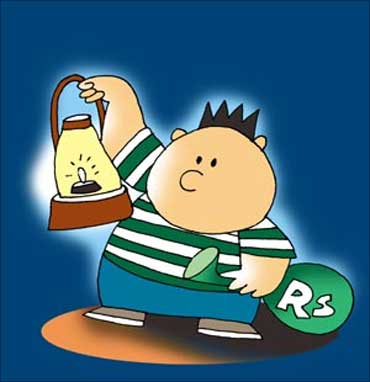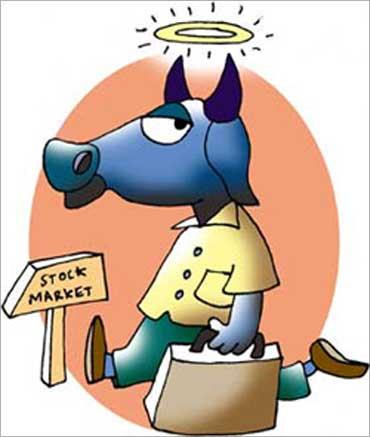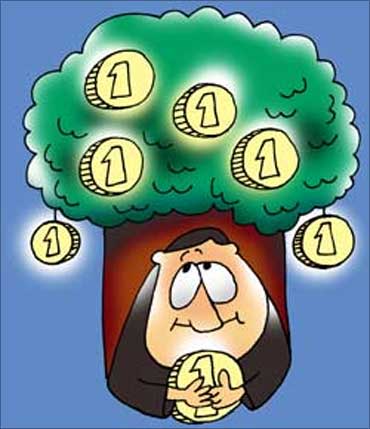
Don't be deceived by this simple-sounding emphasis on common sense investing. These simple rules are the distillation of a lifetime's stunning investment achievements and wisdom. You will profit from them.
1. There's no escaping risk
Once you decide to put your money to work to build long-term wealth, you have to decide, not whether to take risk, but what kind of risk you wish to take. 'Do what you will, capital is at hazard', just as the Prudent Man Rule assures us.
Yes, money in a savings account is dollar-safe, but those safe dollars are apt to be substantially eroded by inflation, a risk that almost guarantees you will fail to reach your capital accumulation goals.
And yes, money in the stock market is very risky over the short-term, but, if well-diversified, should provide remarkable growth with a high degree of consistency over the long term.
...
John C Bogle is a doyen of the global mutual fund industry. He was designated by Fortune magazine as one of US investment industry's four "Giants of the 20th Century". Bogle and the Vanguard group pioneered the concept of index mutual funds by launching the Vanguard 500 Index Fund. He is also the author of five bestselling books on mutual funds and investing.

2. Buy right and hold tight
The most critical decision you face is getting the proper allocation of assets in your investment portfolio - stocks for growth of capital and growth of income, bonds for conservation of capital and current income.
Once you get your balance right, then just hold tight, no matter how high a greedy stock market flies, nor how low a frightened market plunges.
Change the allocation only as your investment profile changes. Begin by considering a 50/50 stock/bond balance, then raise the stock allocation if:
As these factors are reversed, reduce the 50 per cent stock allocation accordingly.
...

3. Time is your friend, impulse your enemy
Think long term, and don't allow transitory changes in stock prices to alter your investment program. There is a lot of noise in the daily volatility of the stock market, which too often is 'a tale told by an idiot, full of sound and fury, signifying nothing'.
Stocks may remain overvalued, or undervalued, for years. Realise that one of the greatest sins of investing is to be captured by the siren song of the market, luring you into buying stocks when they are soaring and selling when they are plunging. Impulse is your enemy. Why? Because market timing is impossible.
Even if you turn out to be right when you sold stocks just before a decline (a rare occurrence!), where on earth would you ever get the insight that tells you the right time to get back in? One correct decision is tough enough. Two correct decisions are nigh on impossible.
Time is your friend. If, over the next 25 years, stocks produce a 10 per cent return and a savings account produces a 5 per cent return, $10,000 would grow to $108,000 in stocks vs. $34,000 in savings. (After 3% inflation, $54,000 vs. $16,000). Give yourself all the time you can.
...

4. Realistic expectations: The bagel and the doughnut
These two different kinds of baked goods symbolize the two distinctively different elements of stock market returns. It is hardly farfetched to consider that investment return - dividend yields and earnings growth - is the bagel of the stock market, for the investment return on stocks reflects their underlying character: nutritious, crusty and hard-boiled.
By the same token, speculative return - wrought by any change in the price that investors are willing to pay for each dollar of earnings - is the spongy doughnut of the market, reflecting changing public opinion about stock valuations, from the soft sweetness of optimism to the acid sourness of pessimism.
The substantive bagel-like economics of investing are almost inevitably productive, but the flaky, doughnut-like emotions of investors are anything but steady - sometimes productive, sometimes counterproductive.
In the long run, it is investment return that rules the day. In the past 40 years, the speculative return on stocks has been zero, with the annual investment return of 11.2 per cent precisely equal to the stock market's total return of 11.2 per cent per year.
But in the first 20 of those years, investors were sour on the economy's prospects, and a tumbling price-earnings ratio provided a speculative return of minus 4.6 per cent per year, reducing the nutritious annual investment return of 12.1 per cent to a market return of just 7.5 per cent.
From 1981 to 2001, however, the outlook sweetened, and a soaring P/E ratio produced a sugary 5 per cent speculative boost to the investment return of 10.3 per cent.
Result: The market return leaped to 15.3 per cent - double the return of the prior two decades.
The lesson: Enjoy the bagel's healthy nutrients, and don't count on the doughnut's sweetness to enhance them.
...

5. Why look for the needle in the haystack? Buy the haystack
Experience confirms that buying the right stocks, betting on the right investment style, and picking the right money manager - in each case, in advance - is like looking for a needle in a haystack.
Investing in equities entails four risks: stock risk, style risk, manager risk, and market risk. The first three of these risks can easily be eliminated, simply by owning the entire stock market - owning the haystack, as it were - and holding it forever.
Owning the entire stock market is the ultimate diversifier. If you can't find the needle, buy the haystack.
[Excerpt from Investing Rules from the Masters. Published by Vision Books.]
(C) All rights reserved